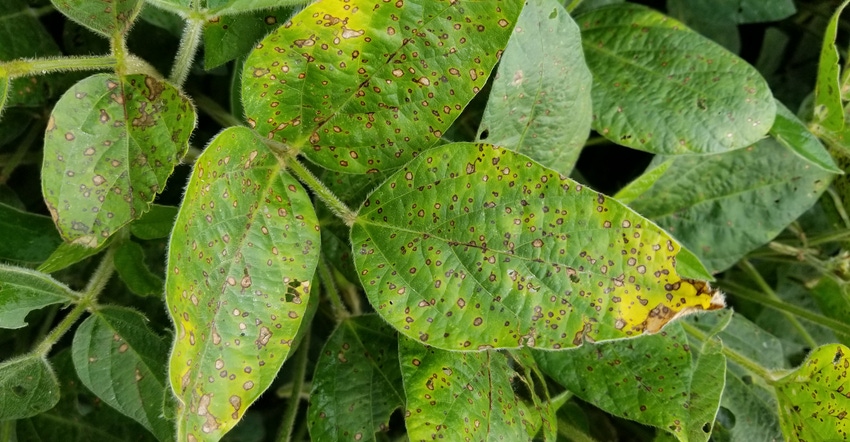
You’ve heard a lot about herbicide resistance. Odds are you’ve heard much less about fungicide resistance. If you don’t want to hear about it in the future, take time to understand what could lead to fungicide resistance and how you can help minimize its development.
Here’s an exclusive interview with Darcy Telenko, Purdue University Extension plant pathologist:
Is possible fungicide resistance an issue in corn? Why or why not? Yes, most of our fungal pathogens have the potential to evolve resistance to our fungicides, especially if repeatedly exposed to the same mode of action. We have not documented this in any corn pathogens in Indiana at this point in time, but it is highly possible. If a single mode of action is applied over and over, it will select individuals within that fungal population that survive. Over time, the population then can shift to being resistant to that fungicide chemistry.
Diseases that have multiple life cycles in a season in corn and soybeans are more at risk. Many of the Cercospora species are listed at a medium risk for development of resistance. This includes Cercospora sojina (frogeye leaf spot) and Cercospora kikuchii (cercospora leaf blight). In addition, Septoria species, which cause brown spot in soybean and northern corn leaf blight in corn, are also ranked in the medium risk category.
Are people watching for resistance in corn diseases? Yes. We are currently collaborating with colleagues in the Corn Disease Working Group to determine if any of the populations in corn have developed resistance. We are currently surveying populations of gray leaf spot and northern corn leaf blight and will update if we find any.
How do we keep resistance from happening? The best way to minimize the risk is to make informed fungicide applications — only applying them when necessary, and rotating modes of action or using mixed modes of action.
Is fungicide resistance in soybeans only an issue with frogeye leaf spot? Frogeye is the main disease we are tracking here in Indiana, but there are also reports for brown spot and cercospora blight fungicide-resistant populations in the Southern states.
How do we prevent resistance in soybeans? For resistance management in both corn and soybeans, it is a three-step process. First, scout and properly identify the pathogen. Second, understand how the disease develops and how the environment will influence the disease risk. Be aware of the disease triangle: susceptible variety or hybrid, favorable environment, fungal pathogen present in a field. Third, use Integrated Pest Management practices such as disease-tolerant or resistant seed, rotation between nonhosts, and then rotating chemistries and using mixed modes of action, applying only when risk is high for disease.
Farmers appear to understand less about fungicide classes than herbicide groups, and many struggle with them. Can they rely on retailers to do the right thing to avoid fungicide resistance, or should farmers be knowledgeable, too? Fungicide classes are as easily determined as the herbicide groups. Every fungicide label has the Fungicide Resistance Action Committee code, which will indicate which fungicide group a chemical belongs in. Many fungicides used in corn and soybeans contain Group 11 (QOI/strobilurin), Group 7 (succinate-dehydrogenase, or SDHI), and/or Group 3, (demethylation inhibitors, or DMI).
For more information, check the Fungicide Resistance Action Committee website and Take Action Fungicide-Resistance Management website.
About the Author(s)
You May Also Like




